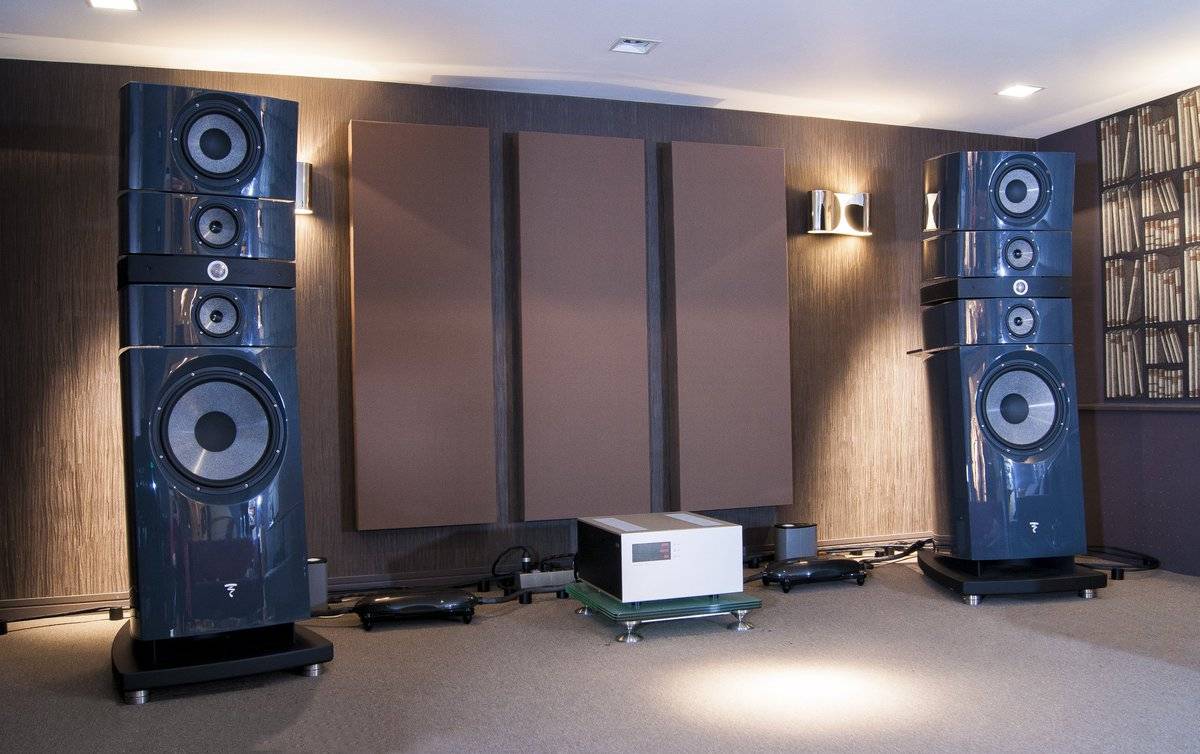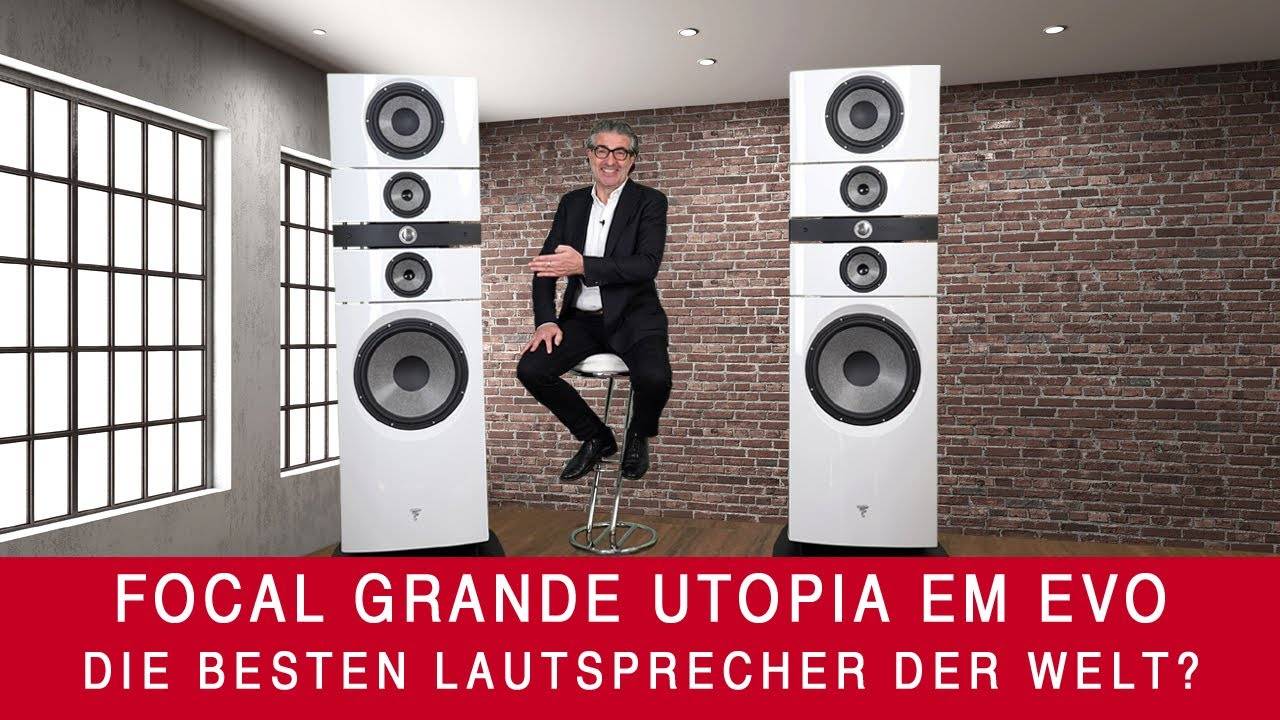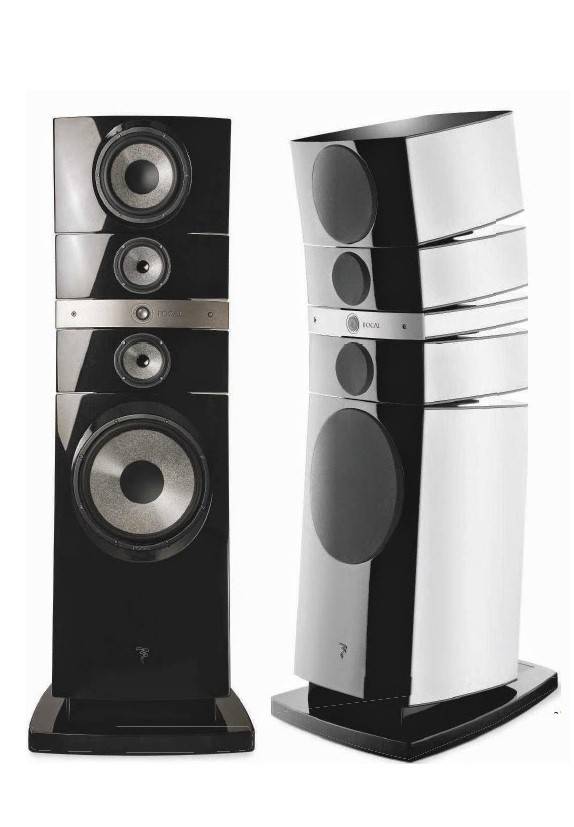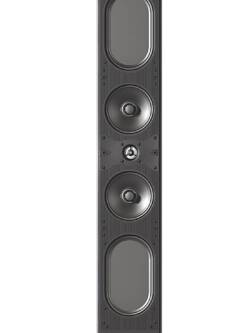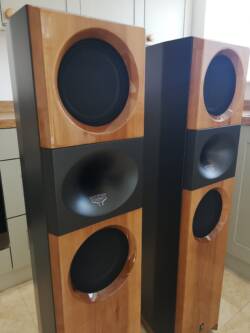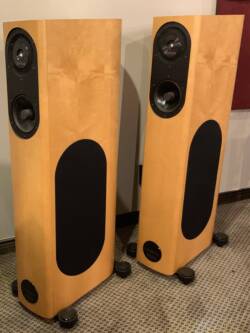Focal Grande Utopia EM (Piano Black) Bargain
Original price was: R2,800,000.00.R1,590,000.00Current price is: R1,590,000.00.
SPECIFICATIONS
| Type | 4-way, floorstanding bass-reflex loudspeaker |
| Drivers | Electro-Magnetic 16″ (40cm) ‘W’wooferMultiferrite 11″ (27cm) ‘W’midbass2 Power Flower 61/2″ (16.5cm) ‘W’ midrange drivers with TMD suspension and NIC magnetIAL2 pure Beryllium inverted dome 1″ (27mm) tweeter |
| Frequency response (+/- 3dB) | 18Hz – 40kHz |
| Response at – 6dB | 14Hz |
| Sensitivity (2.83V / 1m) | 94dB |
| Nominal impedance | 8 Ω |
| Minimal impedance | 3 Ω |
| Filtering frequencies | 80Hz / 220Hz / 2,300Hz |
| Recommended amp power | 50 – 1,500W |
| Dimensions (H x L x D) | 7913/16 x 253/4 x 345/8″ (2,012 x 654 x 880mm) |
| Weight | 584lbs (265kg) |
MEASUREMENTS
Sensitivity (SPL/1m/2.83V – Mean/IEC/Music): 91.2dB / 91.0dB / 90.7dB
Impedance modulus: minimum & maximum (20Hz–20kHz): 1.9ohm @ 107Hz / 17.0ohm @ 2.4kHz
Impedance phase: minimum & maximum (20Hz–20kHz): –32° @ 3.3kHz / 52° @ 226Hz
Pair matching/Resp. error (500Hz–20kHz): ±1.3dB / ±4.3dB/±3.9dB
LF/HF extension (–6dB ref 200Hz/10kHz): 39Hz / >40kHz / >40kHz
THD 100Hz/1kHz/10kHz (for 90dB SPL/1m): 0.2% / 0.6% / 0.1%
Dimensions (HWD) / Weight (each): 2012x654x880mm / 265kg
Price: £159,999
Description

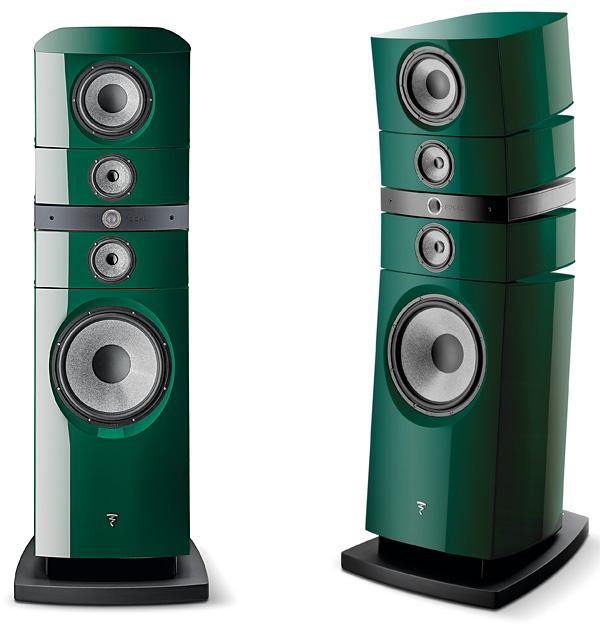
 The latest Utopia flagship has improved drivers and cabinets – does the sound match its impressive presence?When it comes to the description of products – and not just in hi-fi – one word has become so ubiquitous that it no longer has much meaning: that word is ‘iconic’. Yet Focal has dodged that particular bullet by describing its new Grande Utopia EM Evo – all 265kg, two metres and £160k-a-pair of it – and its smaller stablemate, the Stella Utopia EM Evo, as ‘the most emblematic high-fidelity loudspeakers of all its collections’.
The latest Utopia flagship has improved drivers and cabinets – does the sound match its impressive presence?When it comes to the description of products – and not just in hi-fi – one word has become so ubiquitous that it no longer has much meaning: that word is ‘iconic’. Yet Focal has dodged that particular bullet by describing its new Grande Utopia EM Evo – all 265kg, two metres and £160k-a-pair of it – and its smaller stablemate, the Stella Utopia EM Evo, as ‘the most emblematic high-fidelity loudspeakers of all its collections’.
You can kind of see where the company’s coming from. After all, the unusual design, with its upper section canted forward, and the range of high-gloss colour finishes – here in a choice of Ash Grey, British Racing Green, Black Lacquer, Carrara White and Metallic Blue – has echoes through the range, down to the much more affordable Sopra and Kanta lineups. Encounter a pair of high-end Focal speakers, and you could hardly confuse yourself you’re sitting in front of the product of any other manufacturer.
Looming Thunder
All the same, nothing quite prepares you for the sheer visual impact of a pair of Grande Utopia EM Evo speakers, even in editor PM’s relatively large listening room where we conducted both lab and listening tests. I’d experienced the same speakers a few weeks previously at a show, where they looked big in a cavernous hotel conference room; here, in Ash Grey and virtually filling the space from floor to ceiling, they were positively lowering in their storm-toned colourway. ‘Presence’ doesn’t cover it: these speakers look just plain intimidating.
Hands On
It’s not the first time the Grande Utopias have graced these halls: in their earlier iteration they were reviewed by the late John Bamford [HFN Sep ’14] in the same room. And I’d heard that previous version in various locations over the years, from a hotel suite when they were launched through to Focal’s own rather excellent listening room in Saint Etienne. However, this was the first time I was to get truly ‘hands on’ with the Grand Utopia EM Evo speakers, connected into a known system and in a room with which I was familiar – so expectations were high.
A word about that ‘hands on’ thing… Given their sheer scale and mass, this isn’t a speaker you’d want to install and set up without a crew. There’s another reason, too: if you’ve already formed an impression of complexity just from the pictures on these pages, you ain’t seen the half of it.

With some pride, Focal mentions the degree to which the speakers can be customised to suit the listening space. Its ‘Focus Time Adjustment’ covers 1458 possible mechanical and electronic permutations. These include a series of links on the cabinet rear enabling the crossover characteristics to be altered. Bass tuning for that sub-80Hz woofer is also offered via a level control on the offboard PSUs that serve that big electromagnetic (EM) driver at the bottom of each ‘stack’.
Mechanical adjustment involves retrieving the supplied ‘starting handle’, inserting it into a hole in the rear of the tweeter cabinet – the speaker is in five sections – and cranking. As you wind, the mechanics within curl, or uncurl, the top of the speaker toward the listening position, enhancing that ’emblematic’ shape. A numerical readout on the cabinet rear makes the setting repeatable. Meanwhile the electrical links allow you to modify the crossover slopes and relative levels of the drivers, and adjust the Q of the subwoofer, which can help modify the bass delivery when used in conjunction with those sub-bass power controls. These two off board boxes [see Sidebar 2], with their multi-position switches, are PSUs for the electromagnets used in the place of conventional permanent types in Focal’s big 40cm driver. In practice, dialling the power up or down has more impact on the damping of its bass than output or extension.
I found a middle setting was about right in PM’s room, but it remained a juggling act between getting convincing bass and still maintaining control. But I guess it beats trying to heft 265kg apiece to different positions, listening and then doing it all again…
Made In France
As usual Focal goes its own way, with everything designed and manufactured in-house. So what has been Evo’d here? Well, the mid drivers have gained Tuned Mass Dampers [see Sidebar 1], and the addition of Focal’s Neutral Inductance Circuit – a Faraday ring in the motor circuit of the two 16.5cm sandwich-coned ‘W’ drivers. This normalises the field strength, inductance and reduces distortion of the magnet assembly regardless of voice coil position.
In addition the driver mounting is strengthened with the use of milled-from-solid ‘Reinforcement Rings’ between the woodwork and the driver chassis. These stiffen the assembly and spread the load of the attachment. Full rings are used on the two 16.5cm drivers, with ring ‘segments’ for the 40cm unit.
These changes have enabled the crossover to be revised as part of the development process, improving the phase response between bass and midrange drivers. Otherwise the Utopia still uses those five drivers, an inverted beryllium dome tweeter, with ‘Infinite Acoustic Loading’, and a 27cm ‘W’-coned midbass unit making up the complement. Each is mounted in its own ‘Gamma Structure’ enclosure, made from MDF up to 5cm thick and featuring a proprietary internal damping material.
The speaker is delivered in two pieces, with the topmost box, for the 27cm midbass driver, mounted onto the rest of the assembly via two locating pins that also serve to make the electrical connection across the divide. As before, reflex loading of that massive woofer is achieved with a downward-venting laminar flow port, with the speaker tilted back on a substantial base that also houses bi-wire terminals and the input for the sub-bass unit’s PSU.
Completing the look is the ‘Graphite Black’ finish of the tweeter module, feet and the speaker chassis, which are revealed when you remove the individual grilles for each driver. Incidentally, the perforated metal grille that protects the beryllium tweeter is now a permanent fixture on the Utopia EM Evo.
![]() Sound Of Paradise?
Sound Of Paradise?
Auditioned in editor PM’s listening room on the end of a system using a Melco N1ZS20 music library [HFN Jun ’17] feeding a dCS Vivaldi One DAC/preamp and Constellation Taurus power amp, the new Utopias frustrated as much as they impressed. Yes, there’s so much they do well, but somehow they too often failed to come together to bring on the magic I was expecting from speakers at this level driven by such components.
The ability to tailor the sound, and in particular the bass, is an attractive feature, but I never really got an entirely satisfying combination of weight and control in the low frequencies. There was never a suggestion of boom or ‘room unfriendliness’ but rarely was there the anticipated low-end grunt.
Having recently heard the Espen Eriksen Trio play live, augmented by saxophonist Andy Sheppard, I appreciated the analytical clarity these speakers brought to their Never Ending January set [Rune Grammofon RCD 2173 96kHz/24-bit]. However, I also missed the warmth and sense of the three playing together as a cohesive whole: they never really sprang free from the speakers, and there was a marked absence of an ‘organic’ soundstage. A bit of cranking of the old ‘starting handle’ tightened things up a little, but the sound never quite gelled.
Similarly with the Scottish Chamber Orchestra’s recording of Wagner’s ‘Siegfried Idyll’ [from its 40th Anniversary Edition, Linn CKD540, 192kHz/24-bit]. The sound delivered was richly detailed, with a sweet, clear presentation and striking instrumental textures, but there was not quite that tingle factor this recording can evoke, just as the soundstage was slightly two-dimensional and lacking in ambience.
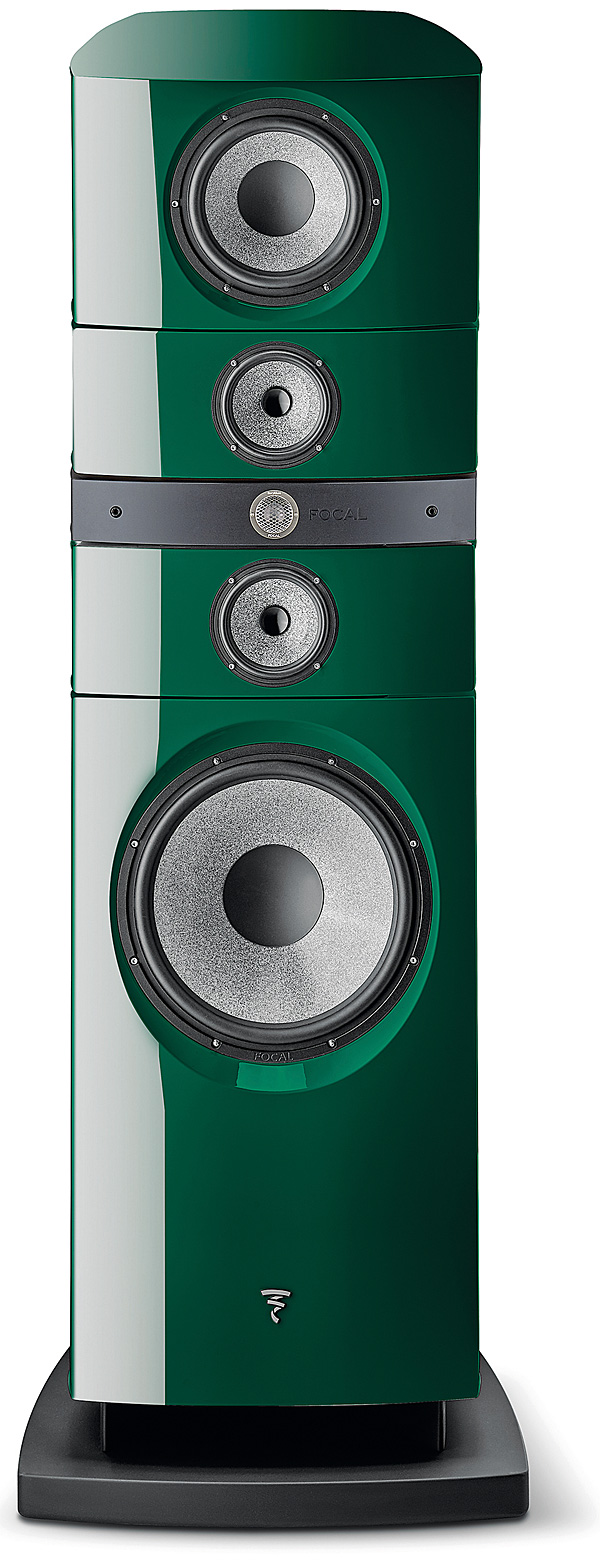
Fulsome Fusillade
Tonally there’s nothing at all wrong with the sound, but the magic is in short supply, while with a track with serious bass impact, such Diana Ross’s ‘I’m Coming Out’ from her Diana album [Motown 530 099-2], the sheer power the speakers can deliver threatens to overwhelm the singer.
Released in 1980, the album’s production, by Nile Rodgers and Bernard Edwards, is hardly shy when it comes to the rhythm section, and against the fusillade of bass and percussion Ms Ross sounds a little lost back there behind the line of the speakers somewhere. Following a little more bass adjustment and she gets just that bit more of a fighting chance, but then that’s at the expense of some of the Chic-powered drive of the track.
Persisting with the more stripped-down mix of Everything But The Girl’s ‘Missing’, from Amplified Heart [Edsel/Rhino EDSK7050], the new Grande Utopia speakers are more able to show what they are made of – crank them up and they pound out the beat of the track while keeping Tracey Thorn’s vocals very much front and centre. However, hit them with some even heavier bass in the form of a very vintage-sounding 1992 Shep Pettibone mix of Level 42’s ‘Lessons In Love’ [from The Remixes, 513 085-2] and there’s a hint of Mark King’s thumb-slap bass taking over the room as that big woofer gets into its stride.
When these speakers are good, they’re very good, delivering real live atmosphere and ferocious drive with the nostalgia of the 2012 Recorded Live At Metropolis Studios set by Bill Nelson and his Gentlemen Rocketeers [Salvo SVX001]. Those old 1970s hits come up fresh in a sparkling live recording, and there’s some superb playing going on here, even though legend has it Nelson wasn’t happy with the set-up and the lack of rehearsal time. You’d never guess it with the big Focals doing their PA stack impersonation and howling out the guitars. Furthermore, what’s lacking in the niceties of pinpoint imaging is more than compensated for by the sense of fine musicians just clicking together in front of a clearly appreciative audience.
C’est La Vie
Then, just when you think you’ve got their measure, these 2m-tall monoliths throw you a curveball – or maybe that’s a Gallic shrug – with The Who’s system-testing ‘Baba O’Riley’ from Who’s Next [2014 Polydor Japan release, UIGY-9596]. Things start promisingly enough, but as the track builds the Utopia EM Evos make it sound, well, a little anaemic, with Keith Moon’s usually cannoning drums a particular victim – hardly the anthemic album opener it has long been.
While I don’t for a minute regret having spent time with the Grande Utopia EM Evo speakers, I just wish I’d found them a bit more special. I wonder if the French have an expression for ‘a curate’s egg’?
Hi-Fi News Verdict
The sheer amount of technology that’s been brought to bear on these gargantuan speakers is as undeniable as their physical presence is inescapable. However, though I doubt this conclusion will matter to those with the space, budget and hankering for these speakers, I must say that they demand long and careful auditioning, and I sincerely hope their buyers find the magic in them, and love them more.
Tuned Mass Damping
However stiff you make the cone or dome of a moving-coil drive unit, ideally obviating all ‘breakup’ resonances within the driver’s passband, the roll surround can still let the side down. It has to be flexible to allow cone movement, so is itself subject to bending resonances; and because it forms an annulus around the external diameter of the diaphragm, it represents quite a large radiating area.
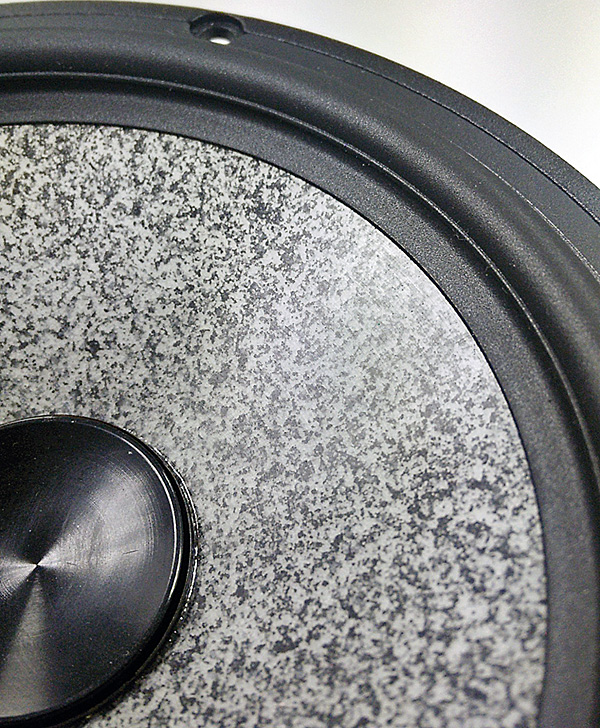
The most significant disruption to frequency response occurs when the surround is moving in opposite phase to the cone. Focal’s novel solution is to adapt a well-known technique from other fields of mechanical engineering called TMD (tuned mass damping), in which carefully dimensioned and positioned masses act to suppress resonance. In the Utopia’s midrange drivers a single ‘mass’ takes the form of a small rib moulded into the very edge of the roll surround. KH
Electromagnets
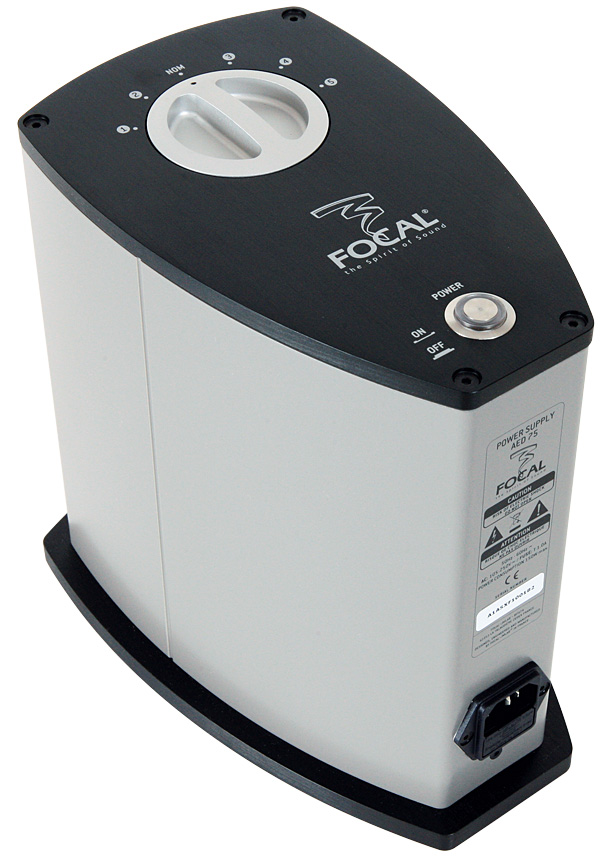
Before there were permanent magnets, the first loudspeakers utilised electromagnets. A large ‘field coil’, energised by hundreds of volts of DC through a second pair of connections to the driver, created a temporary magnetic field. It wasn’t until after World War II that advances in permanent magnet materials, and their subsequent affordability, saw the decline of field coil drivers for consumer audio applications – although recent years have seen a resurgence of interest among audiophile hobbyists, with various driver models available for DIY speaker builders from the likes of Feastrex, Supravox, Voxativ and Lowther America.
Varying the voltage to Focal’s 400mm electromagnetic low-bass driver alters both its sensitivity and electromagnetic damping, allowing its output to be tuned to suit a range of different room conditions.
Focal claims 94dB sensitivity for the Utopia EM Evo which would make it one of the highest-sensitivity direct radiating loudspeakers we have measured. But our pink noise figure of exactly 91dB is well short of that. This was obtained by measuring at 2m distance (not our usual 1m), the cabinet ‘curl’ maximised and adding 6dB to compensate. A further measurement at 1m affirmed this compensation and also that the responses at 1m and 2m were little different. Although 91dB is not 94dB, it’s still a high sensitivity which, despite the Utopia’s imposing dimensions, has required the use of low impedance. Focal’s 8ohm nominal figure doesn’t sit well with its claimed 3ohm minimum, and we measured a low of 1.9ohm. LF phase angles are quite well controlled but, with the low modulus, drops the EPDR to a minimum of 1.1ohm at 187Hz, with further dips to 1.2ohm at 130Hz and 1.4ohm at 88Hz – so the latest Utopia presents an extremely challenging load.
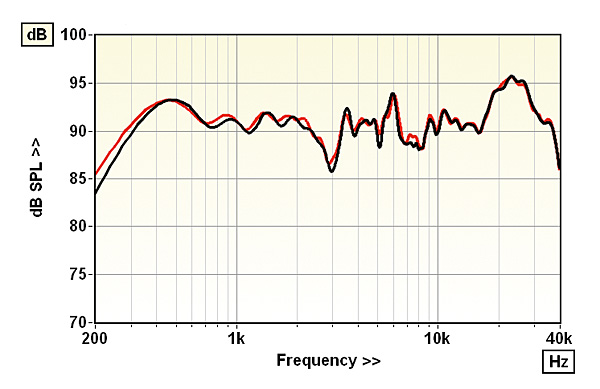
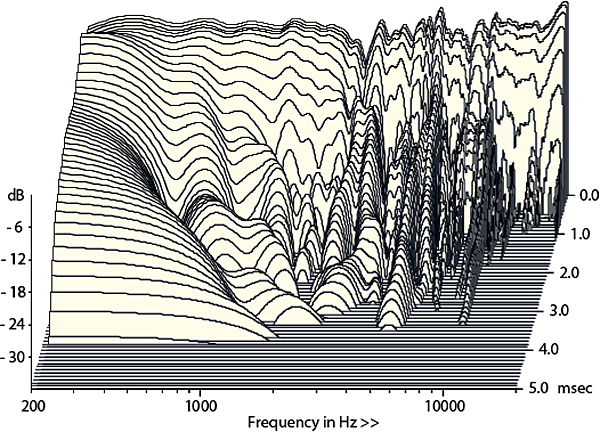
Ignore the hump and roll-off below 700Hz which are artefacts on the forward frequency responses, measured on the tweeter axis at 2m [see Graph 1]. The overall trend is flat but low-treble irregularities and a rise towards 20kHz increase the response errors to ±4.3dB and ±3.9dB, respectively. Pair matching error over the same 500Hz-20kHz was also less than outstanding at ±1.3dB. Using the jumpers, treble output can be reduced by about 2dB or boosted by about 0.8dB and midrange can be cut or boosted by about 1dB. Diffraction-corrected nearfield measurement showed the bass extension (nominal setting) to be 39Hz (–6dB re. 200Hz). The CSD waterfall [Graph 2] is cluttered with low-treble resonances. KH
The Focal—JM Lab Utopia III ‘Grande Utopia EM’ Loudspeaker
Focal asks on its website whether the Grande Utopias are the best speakers in the world. It’s an almost impossible question to answer given audiophiles’ tastes, style, etc, but in other ways, it’s almost a simple question. I figured out my answer quite quickly, so resplendent are these extremely expensive monoliths from France.
I’ve heard most speakers that are (or have been) considered benchmarks, including those by Genesis, Wilson, previous JM Labs’ models, Hansen, Verity, and other favorites of mine. The Grande Utopia EMs are the third and last of my reviews for this family of speakers. The Scala certainly punched above its 30K weight, the larger Maestro gave even more of itself — both are magnificent speakers and will fit into any audiophile’s setup given they have the dosh. I did not review the fourth in line Stella, but have heard it at length. Yes, also magnificent and more of the same family likeness. With the EM Grandes, we jump the rails upping the price eighty thousand dollars. That’s a big matzah ball hanging there. Is the taste worth the price difference?

Of course the speakers are brilliant. They echo the family sound — open, clear sound, incredibly precise imaging and huge soundstage. The Scala and Maestro are both superb imitating live events and the Stella gets you even closer. But these Grande EMs will get you as close as present technology allows. Yes, a benchmark speaker.
In good spaces, with good ancillaries, very large, well-designed speakers can move lots of air and can fool the ear into suggesting to us we are elsewhere. Interestingly, no matter what volume was selected, the Grande Utopias delivered music in the most realistically grand fashion. Orchestras were laid out in front of me as if I were on the podium. Picking out an instrumentalist’s placement was a breeze, such was the specificity of the imaging. The delicious and tactile layering of the soundstage was an elixir caressing the ears on all types of music.
Technically, these are masterpieces (detailed information and Specifications below). Much of the speaker is made of parts developed by Focal including the fabulous Beryllium tweeter, and ‘Focus Time’ and ‘Gamma Structure’, as used in the complete Utopia line. Focal explains the time delay and structure as ‘The very structured shape of the Grande Utopia EM immediately evokes a kind of spine. Stylistic effect? No because the design axis chosen for Utopia 3 brushes aside anything superfluous. Function justifies shape and if the Grande Utopia EM evokes a spine, it’s because it’s articulated. True Utopia DNA since the beginning, the Focus Time consists in placing the drivers in an arc shape to orientate them towards the listening point. This time, the Grande Utopia EM offers a mechanical adjustment to optimize the “Sweet Spot”, perfect listening point.

Articulating a 573lb (260kg) loudspeaker could have been considered as an unacceptable argument at least and without doubt as inconceivable. Thanks to a mechanical system operated by a handle placed in the back body of the tweeter compartment, the 4 upper enclosures of the Grande Utopia EM can spread out.
The Gamma structure role is simple. All the strength of the magnetic motor must be transmitted to the cone of the driver. If the loudspeaker moves, even in an imperceptible way (vibrations), it’s because there is energy loss.
The loudspeaker must oppose such an inertia and such a rigidity that it must stand up to this force: that’s the Gamma structure principle. To cope with vibrations, we called a French specialist, European leader in that field that put all its know-how to provide vibration cartographies of our cabinets. We can see that mass doesn’t solve everything, neither the thickness of the sides that sometimes reach 23/8” (6cm) thick MDF, but the addition of reinforcement perfectly placed thanks to the data analysis becomes dreadfully efficient.’
An accurate, if colourful, assessment of these two proprietary technologies.
Musically, audiophiles could not ask for anything more than the Grandes. They play any genre of music effortlessly, but, be aware — the speakers reveal ruthlessly. Any weakness in the chain will stare at you like a deer in your headlights. Same for the software. CDs remastered with care such as the Mobile Fidelity Gold of Sinatra’s Only the Lonely sounded magnificent. Ol’ Blue Eye’s vocal chords and soul are laid bare by the speakers. I’ve never experienced his word painting and emotion as impactful as through these speakers. The last time I heard the CD was on Hansen Audio’s The Grand Master, an even more expensive speaker. Yet, the Focals had me at Nelson Riddle’s rhapsodic orchestral intro.
One of my recent test CDs is Chesky’s excellent Barbirolli/RPO Sibelius 2, one of the greatest orchestral performances of any repertoire on record. I’ve heard the LP (awesome) and CD many times. I have never heard the inner workings of the orchestra as clearly. I’m not talking X Ray — the sound quality produced by many expensive behemoths. Here, each musician’s unique timbre was intact, fleshed out and rich. Yet, the transients and decay were completely natural as if I was sitting as a guest in the original Walthamstow Town Hall acoustic. The imaging was by far the best I’ve experienced, each layer sitting flat on the floor, riser-free. And with a Charles Gerhardt/Kenneth Wilkinson sourced recording, a most beautiful blend of instrumental families. Listening to this CD was a revelation — I’ve conducted it a couple of times and played it many times. The orchestra’s width of sound was incredible — everything laid out before you in a very realistic way. The soundstage also went way back, a trickier plane in which to specify instruments. Oboe keys clicking and players tonguing, and a few slight horn ensemble discrepancies that I have not heard on any other speaker. On and on.
During one of my lengthy listening sessions, I threw on the Czech Philharmonic’s Bruckner 5 — Bruckner’s most underrated symphony from Bruckner’s must cultish conductor, Lovro von Matacic (I saw him do the 7th with the Philharmonia in the last year of his life). I turned the lights out and laid on the floor and closed my eyes — imaging be damned. I can tell you that I have never heard sounds or experienced a near out of body experience than from this recording, this setting, and these magnificent speakers than the 70 minutes of that symphony. At that time, complaining about the 180K price tag seemed churlish.

As such, only a lucky few will ever own this speaker. Sometimes I dream about how I’d spend my lottery winnings! A call to Focal would be number three on the speed dial after a call to my wife and children. Even before calls to BMW, a realtor in NYC, even before a call to my best friend. They are that special. I would love to own them that much.
Focal must be congratulated for not resting on its laurels. The designers have refined and developed their house sound from their already famous speakers into the new Utopia III line. Reviewing the series has been an absolute pleasure. The prices range from 30K to 180K. For investing audiophiles, the price range gives you an entrance into audio Nirvana. And for those passionate audiophiles who can afford the Grandes, listen at your peril. You won’t be leaving without them.

The Focal – JM Lab Utopia III ‘Grande EM’ Loudspeaker
Focal Grande Utopia EM Review
Seldom has a loudspeaker looked so striking. Focal’s Grande Utopia EM is the French speaker specialist’s statement model, a tour de force which, even in a large listening room, looks fearsomely imposing. Standing over 2m tall it even overshadows Wilson Audio’s mighty Alexandria XLF. It has a slightly larger footprint as well, and weighs only 20kilos less than a Steinway Model O living-room grand!
So it’s hard not to drool over this granddaddy of Focal’s top-line Utopia III model range, whose lineage dates back two decades to the introduction of the first Grande Utopia in 1995. Now in its third generation, it’s been described by some as an ‘acoustical sculpture’ thanks to the uniquely shaped articulated enclosure, which Focal calls Focus Time.
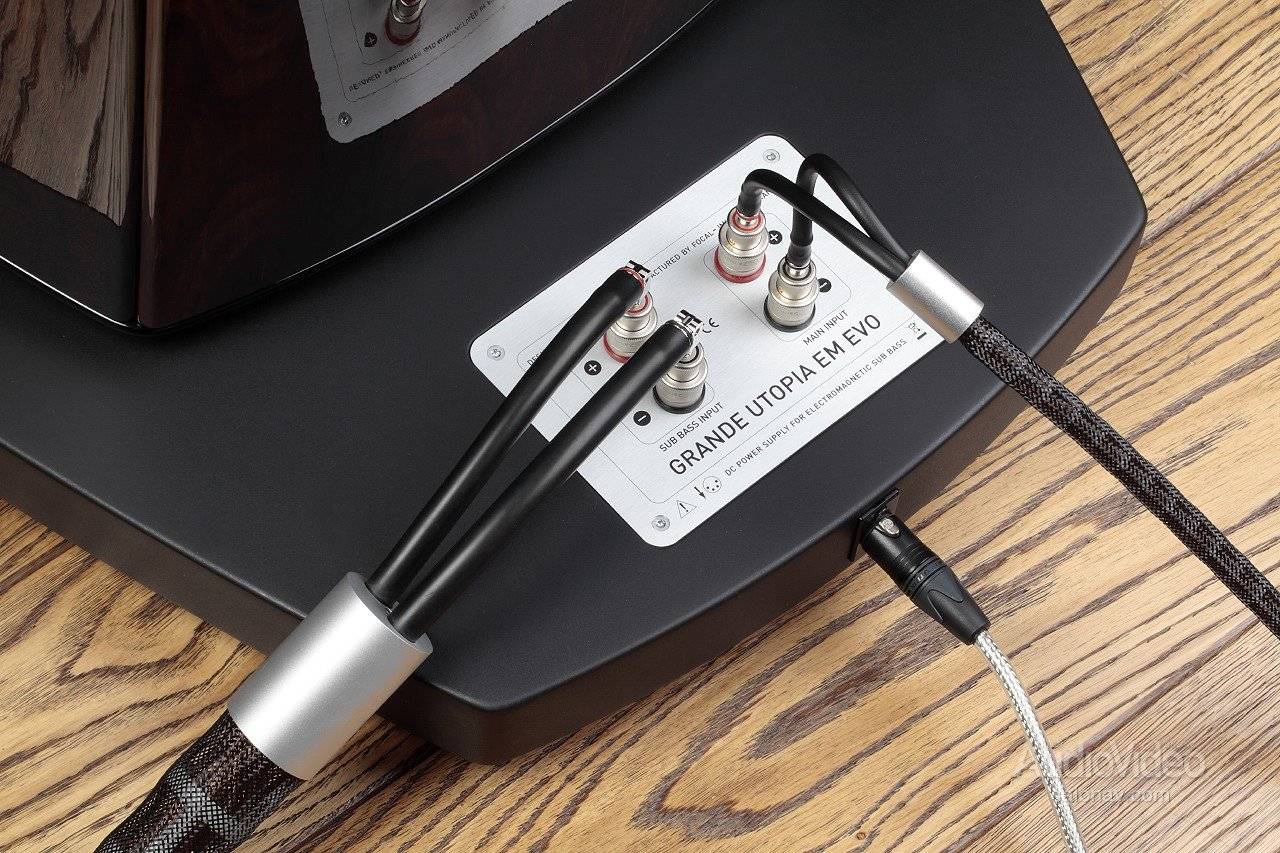 |
| Focal Grande Utopia EM |
The speaker actually consists of a plinth and five separate enclosures: a tweeter section in the centre is flanked by two conjoined cabinets above (one containing a 165mm midrange driver and the uppermost a reflex-loaded 270mm bass driver) and two fi xed cabinets below it (a further 165mm midrange driver and, at the bottom, a whopping 400mm/16in sub-bass driver that operates below 50Hz).
Separate, stacked enclosure modules might not be revolutionary in loudspeaker design, several companies employing this approach to fi ne-tune driver placement and arrival time relative to the listening sweet spot, but in the Grande Utopia Focal’s implementation is nothing short of fabulous! A crank handle, parked behind a drop-down flap at the rear, fits into a socket in the back of the tweeter cabinet. Each turn of the handle adjusts the position of the tweeter relative to the midrange and bass drivers below it, while simultaneously raising or lowering the upper two cabinets by exactly twice as much as the tweeter enclosure – thus preserving the correct ‘arc’ of the baffles. A numerical counter allows you to set the angles precisely and repeatedly in just a matter of moments.
SETTING A BALANCE TO TASTE
Also at the rear are a series of jumpers for fine-tuning the speaker in situ. Three-step settings provide tweaking of the crossover slopes between midrange and treble as well as tweeter and midbass levels and sub-bass Q. The Grande’s sub-bass woofer employs an electromagnetic motor system, whose separate power supply unit furthermore has six level-settings for balancing the overall performance to taste.
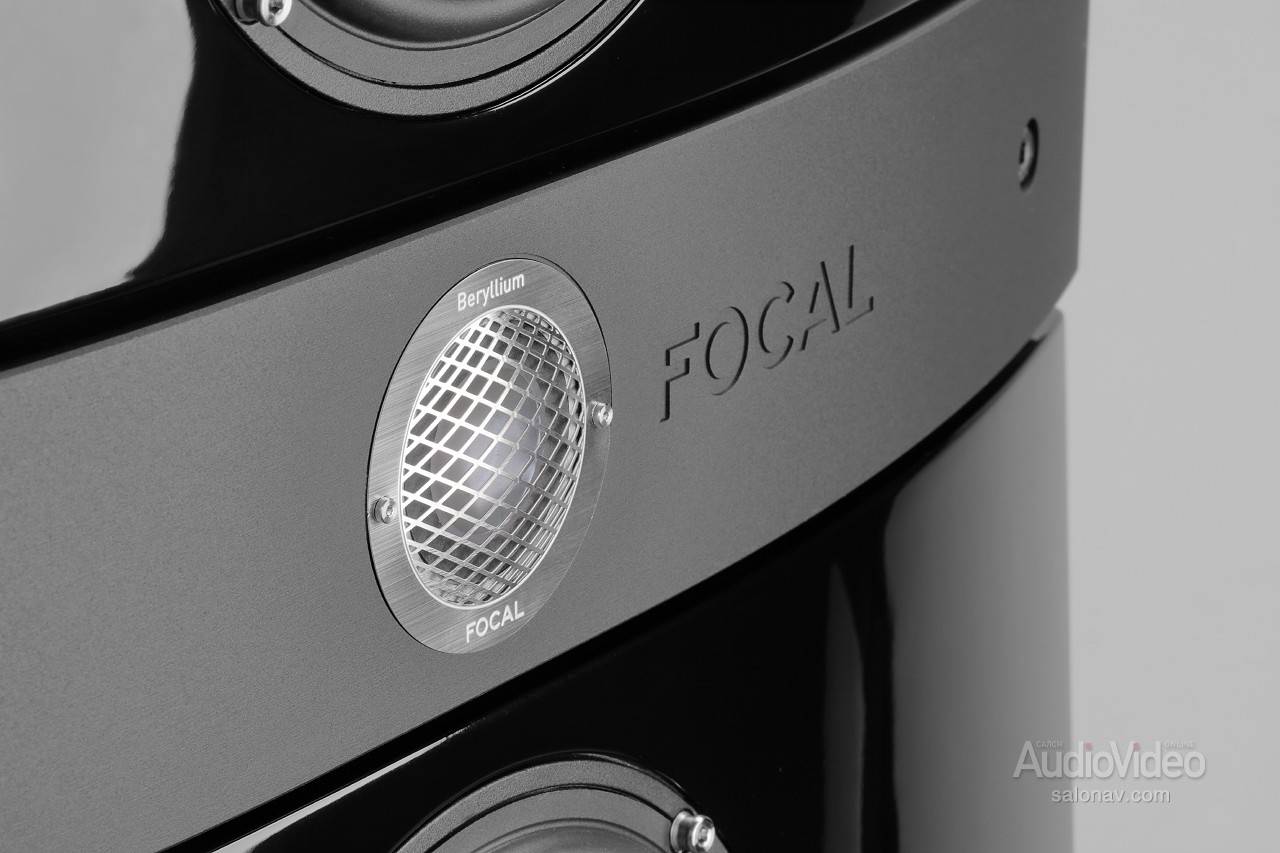
Focal supplies a seven-track CD to aid setup, with useful listening notes to help the process; for example: ‘It is easy to fall into the trap of boosting the level of the EM woofer to make up for defi ciencies in recordings… And there’s no point in trying to reproduce a 16Hz organ pedal in a 25ft room. It ain’t gonna happen.’
Focal manufactures everything in-house. The company owns a substantial cabinet works, builds its own drivers, and even boasts a clean room in which its fabricates its beryllium foil tweeters. The company’s 27mm IAL2 – ‘infi nite acoustic loading’ – inverted dome tweeter is mounted on a precision-machined metal sub-baffle and the rear of the dome and its surround operate into free air behind, loaded by a tuned cavity.
Boasting a claimed bandwidth of 1kHz-40kHz, its motor system employs a neodymium ‘focus ring’ magnet assembly to provide a high field strength. Meanwhile the midrange, bass and sub-bass drivers feature Focal’s thirdgeneration ‘W’ composite sandwich cones formed of Rohacell foam and varying thicknesses of adhesiveimpregnated glass fibre material, trimmed by a laser cutter for precise termination with their surrounds.
The company claims that by controlling the thickness of the foam and the layers of glass fibre tissue it can dial in the characteristics it requires for any given design, optimising a cone’s behaviour for the desired operating frequency range.
The motor system in the 270mm midbass driver features a multiferrite magnet, while the two 165mm midrange drivers employ Focal’s familiar ‘Power Flower’ arrangement where seven small-diameter ferrites form a ring around the voice coil. Regarding its 400mm EM driver (in which 7kg of copper wire replaces a ‘traditional’ permanent magnet) the company says that, compared to the driver featured in the previous Grande Utopia, it offers an 80% increase in available magneticfield, an 88% increase in the force applied to accelerate the cone, increased sensitivity, a lower resonant frequency, and a reduction in distortion by a factor of almost four. The speaker’s four-way network is divided into three separate blocks, with crossover points at 80Hz, 220Hz and 2.2kHz.
The multiple-enclosure cabinet is a work of art, formed of 5cm-thick MDF panels heavily lacquered to an immaculate gloss finish. Stock colours are white carrara, imperial red, hot chocolate and black lacquer, with custom colours to order.
AN ENORMOUS SPREAD
Oh boy… it’s impossible not to be overwhelmed by the scale of the sound image produced by these beautiful behemoths. Hearing them conjured up memories of seminal experiences from my youth – such as my fi rst encounters with ceiling-high Beveridges and Infi nity’s awe-inspiring IRS system of yore.
In the modern era they stand comparison with the aforementioned Wilson Alexandria XLF, Sonus faber’s Aida and a select group of statement designs which anyone able to contemplate owning needs to hear for themselves before whipping out their
platinum Amex cards.
Driven by a Devialet 800 dual-mono amplifier system in the editor’s media room and fed a healthy diet of CD-resolution and hi-res digital music files, the pair of Grande Utopia EMs threw up an enormous sonic picture, creating life-sized images of musicians with consummate ease. And they sure as heck could move some air! We found ourselves pumping the gas as much as we dared, creating rock concert sound pressure levels, and these Focal flagships showed no signs of stress whatsoever.
Playing the hypnotically infectious ‘Dreaming’ from 2011’s Duo collaboration [Jazzland Recordings 060252770419] by Norwegian Jazz pianist Bugge Wesseltoft and German techno producer Henrik Schwartz on synthesizers, showcased the Focal speaker’s startling dynamic capability as the pulsing music moved ever upward. It handled the explosive bass thwacks
seemingly with contempt, as the music rattled our ribcages.

FAST ON ITS FEET
While many monster monitors capable of delivering oodles of bass down to subsonic frequencies can sometimes appear subjectively ‘slow’ and ponderous, the Grande Utopia EM sounds tremendously fast and agile. Indeed with certain music we actually found them a little too sharp-edged, even ‘stark’.
Of course, when hearing familiar recordings through such a massive ‘window’ it’s all too easy to become critical of poor microphone quality and shoddy recording production. But with some ‘reference’ material we were surprised by some spikiness and a degree of coarseness. For example, with the Hoff Ensemble’s Quiet Winter Night acoustic jazz project [2L-087] played from a 192kHz/24-bit file, despite the speaker’s agility the sound appeared very slightly hazy, the instruments’ leading-edge transients mildly blurred.
Of course, we enjoyed many delightful surprises. The Beatles’ ‘And I Love Her’ from the 2009 44.1kHz/24-bit remaster of A Hard Day’s Night sounded delectably intimate – as if Macca had popped in to grant us a personal rendition – and when switching to party mood the pumping bass lines of Nelly’s ‘Pimp Juice’ and ‘Hot In Here’ from his classic Nellyville [Universal 017 747-2] brought grins of satisfaction all round.
Our test measurements reveal that there remains room for further refinement in this ambitious and innovative speaker design. But in a large listening room and partnered with cost-no-object ancillaries they can sound mighty grand.

